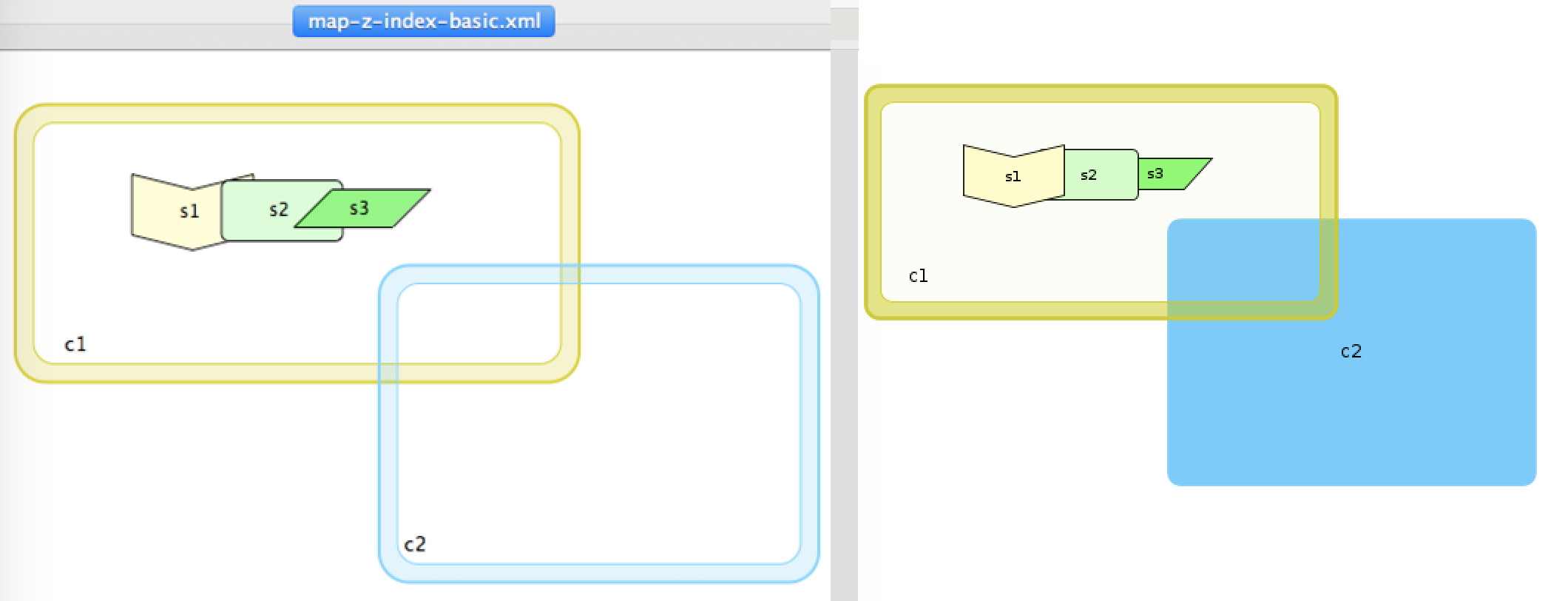Procedural generation of semantic zoom#
Semantic zoom improves map’s clarity. The information about the complexes and the overlaying compartments is extracted from the SBGN-compliant files to generate Pathways and compartments view. In this particular view, on the high level of zoom bigger areas overlay smaller ones, and the contents of complexes are masked. Moreover, you can draw your own, non-compartment areas in CellDesigner to mark functionally important areas. MINERVA will incorporate them into the generation of the semantic zoom.
To draw your own pathways, create an additional text area in CellDesigner (details can be found in CellDesigner user manual, p 76):
click on one of the layers in the left panel, or create a new layer with Edit > Add layer
if Layer toolbox is not visible, click View > Change toolbar visible > Layer
draw TextArea objects using a corresponding button
Note: CellDesigner does not allow to set the colors of the areas. It is possible with MINERVA. MINERVA treats the first line of the area name as its name, and the other lines as special commands. You can set the color of the area by adding the following term in a line after the first one:
BackgroundColor=#xxxxxx, where #xxxxxx is the hex code for the background color.
Furthermore, MINERVA semantic zoom allows to override:
- the visibility of any element, reaction or area
- the transparency levels for any area
The particular levels of visibility and transparency are defined directly by a user in the file. You need to input below terms in your file and specify the zoom value (0, 1, 2…) for an element, reaction or area.
To input the terms and customize the semantic zoom for any:
- species, reaction or compartment (for SBGN/SBML/CellDesigner) - go to NOTE.
- area (for CellDesigner) - double click on the text area. Note: as above, the first line of the area name is considered its designated name, the lines from two onwards are for special commands.
Terms defining user’s semantic view#
SemanticZoomLevelVisibility: zoom_level is used to set up the visibility level for the element, compartment or pathway (e.g. SemanticZoomLevelVisibility: 2 - it means that on a map zoom level 2, the element will become visible on the map)
SemanticZoomLevelTransparency: zoom_level to set up the transparency of the compartment or pathway (e.g. SemanticZoomLevelTransparency: 1 - meaning that on a map zoom level 1, the content of that particular compartment or pathway will be unmasked)
Z-Index for elements#
Z-Index: z, z = {…, -1, 0, 1….} allows to set the order of the drawn elements (bring the element to front/back). With the increase of Z-Index, the element is put to the front. Z-Index is available for the species, reactions, compartments and pathways (CellDesigner text area). To input the terms and customize the order for any:
- species, reaction or compartment (for SBGN/SBML/CellDesigner) - go to NOTE.
- area (for CellDesigner) - double click on the text area.
Note: The term Z-Index is case sensitive. Note: There is no default Z-Index for the elements. Thus, if the element with specified Z-Index overlaps the other element with no specified Z-Index, it is not possible to determine their relative positions. Due to that, it is recommended to define Z-Index for all overlapping elements.
On the below image, on the left, there is CellDesigner map with applied Z-Index in NOTE. On the right image, there is the MINERVA visualization of that CellDesigner file. Find out more about Z-Index in example 5 - Procedural semantic zoom.
 {:width=“900px”}
{:width=“900px”}